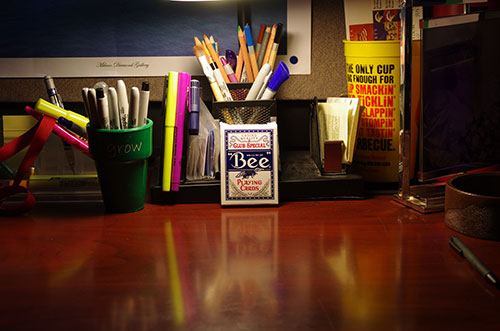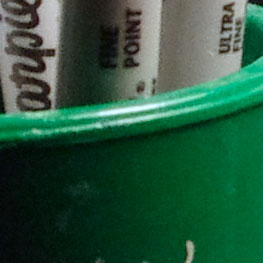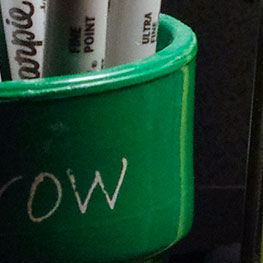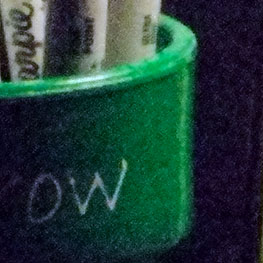As you ALL know, I am passionate about photography (especially of God's natural world). And, I am frugal, often to a fault (just ask Gaye!). So, I don't often buy new photo gear...but, after 8 years of using my Pentax *ist DS2 digital SLR (and loving every moment of it), I got a bonus in my Christmas paycheck (thanks, Bering Straits Aerospace Services!), and I used it to upgrade my primary camera!
The rest of this page is really meant for fellow photo geeks, but I'll try to keep my descriptions as jargon-free as possible, and hopefully, everyone can have fun for a few minutes here!
The new camera is a Pentax K-5 II, Pentax's top of the line flagship model from September 2012 to October 2013. I got mine used, in pristine condition, at the beginning of 2014, for about half its original price from Adorama, which is a very reputable online used camera dealer.
-EW.jpg)
Top left: Pentax K-5 II . . . . . Top right, Pentax *ist DS2
Bottom: My old (1982) Pentax MX film camera (just for fun in comparing!)
ANYWAY, I wanted to show off some of the cool performance improvements I've been experiencing.
The K-5 II is five generations newer than my older Pentax DS2. (and by the way, no, i don't have any idea how they came up with their numbering system.)
The most significant differences are:
- Sensitivity (ISO) ratings (like film speed, which used to be called ASA ratings) up to 51,200 (vs 3,200)
- Many more external controls than before. For example, I can now trigger the autofocus from a button on the back of the camera if I want to.
- Built-in image stabilization, right in the body, which means it works with ALL my lenses!
- Five custom settings "banks" (vs. none, before). I can save any or all parameters of the camera, give it a name, and go to that preset "bank" instantly. I have ones with my settings for scenics on a tripod, scenics handheld, indoors, etc.
- The autofocus acquires its subject – and the shutter fires and returns to ready – MUCH quicker than on the older camera.
- The new camera can take a battery grip! I have one (see picture below). Not only does it give me more power (from an extra battery), it allows me to hold the camera normally in a vertical position, with access to all the required buttons!

The Pentax K-5 II, with battery grip
03-E2W.jpg)
Dan using the camera, in the vertical position, with the battery grip
So, just for grins, I want to show you my comparisons of image noise (new camera vs. old camera). It turns out that digital image "noise" is analogous to film grain. For those who have experience with film, you know how higher sensitivity was always accompanied by greater grain.
It's much the same for a digital sensor: greater sensitivity comes with greater electrical gain applied to the sensor, which results in greater image noise (which comes out looking somewhat like grain).
However, five generations of digital camera technology, over 8 years, does make a difference!
Let me show you:

Here's the basic test scene, shown from the full frame of the camera(s).
We'll be zeroing in on the green cup on the left...

Here's an image from my 8-year-old Pentax DS2, enlarged to 100% (actual pixel size), at its highest sensitivity setting, ISO 3200. You can see some smearing of detail, and some mottling in the green, but this really isn't bad at all – and I have used the ISO 3200 setting often when I've needed it. Remember, in the days of film, this was unheard of...I think around 800 was the max, and then you could push-process to get more, to a point.

Here's the equivalent image from the K-5 II (also ISO 3200). The reason it's larger is that there are more pixels in the same size of sensor. The K-5 II has about 16 megapixels vs. 6 MP in the DS2, so viewing photos at 100% will appear bigger.
EVEN SO, notice the smoothness and clarity of the green areas!

And, if we resize the K-5 II image to the same size as the DS2 (i.e., downsizing to a 6 MP image), you can see a huge increase in clarity, sharpness, and smoothness of color! So at any ISO speed, I'm impressed with the improvements in the technology in my new camera.
By the way, this is equivalent to the effect of taking images from each camera and enlarging them the same amount. And, by the way, these smaller images of the green cup, as seen on your computer, are roughly the same as looking at a small piece of a 20" x 30" prints!

And then, finally, we CAN get to a point of visible ugliness, with lots of splotching, and smearing of fine detail...but, the overall color is still pretty good, the basic shapes are still visible, and you can still read "OW" and "arpie."
But...THIS IS ISO 51,200! That's insanely crazy fast sensitivity, and was completely undreamed of in the world of film or even early digital. Compared to the film I used most often, Kodachrome (ISO 64), it's like going from a shutter speed of 1 second to 1/1000 of a second!
And remember, at this enlargement size, you really should be looking at it from about six feet away...
THE BOTTOM LINE...I'm VERY impressed with my new camera!

A photo with my new camera -- I'm happy!
P.S.: Hey, if you don't recognize the Pentax name, they used to be dominant in the 35mm film SLR world, having invented through-the-lens exposure metering (1960), automatic exposure (1971), full aperture metering (1973), and the first built-in through-the-lens metered flash (1987).
In more recent years, in the digital realm, they've been overshadowed by Nikon, Canon, and Sony...but they still hold onto a good niche, with cameras that are, by comparison with their competition, generally smaller, better at high ISO settings, better at low-light autofocus, better viewing (due to 100% pentaprisms), better weather sealed, with more choices of exposure modes, and more compatible with old lenses (I can use ANY Pentax lens EVER made on my two Pentaxes, and I do use a few from the early 1980's!)
See photos of all my cameras and lenses, and descriptions, on my Photo Gear page! (click here.)